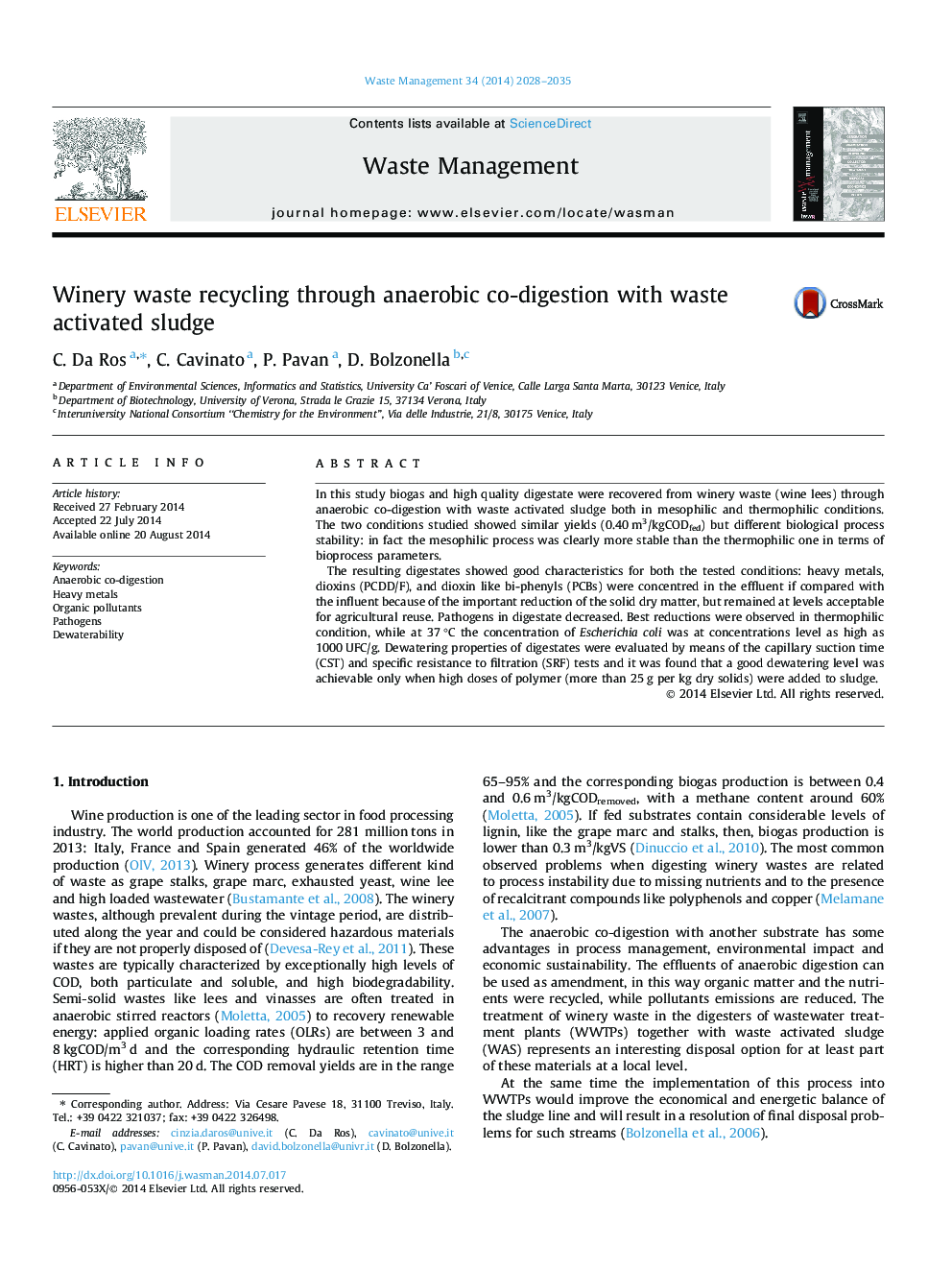| Article ID | Journal | Published Year | Pages | File Type |
|---|---|---|---|---|
| 6354762 | Waste Management | 2014 | 8 Pages |
Abstract
The resulting digestates showed good characteristics for both the tested conditions: heavy metals, dioxins (PCDD/F), and dioxin like bi-phenyls (PCBs) were concentred in the effluent if compared with the influent because of the important reduction of the solid dry matter, but remained at levels acceptable for agricultural reuse. Pathogens in digestate decreased. Best reductions were observed in thermophilic condition, while at 37 °C the concentration of Escherichia coli was at concentrations level as high as 1000 UFC/g. Dewatering properties of digestates were evaluated by means of the capillary suction time (CST) and specific resistance to filtration (SRF) tests and it was found that a good dewatering level was achievable only when high doses of polymer (more than 25 g per kg dry solids) were added to sludge.
Related Topics
Physical Sciences and Engineering
Earth and Planetary Sciences
Geotechnical Engineering and Engineering Geology
Authors
C. Da Ros, C. Cavinato, P. Pavan, D. Bolzonella,
